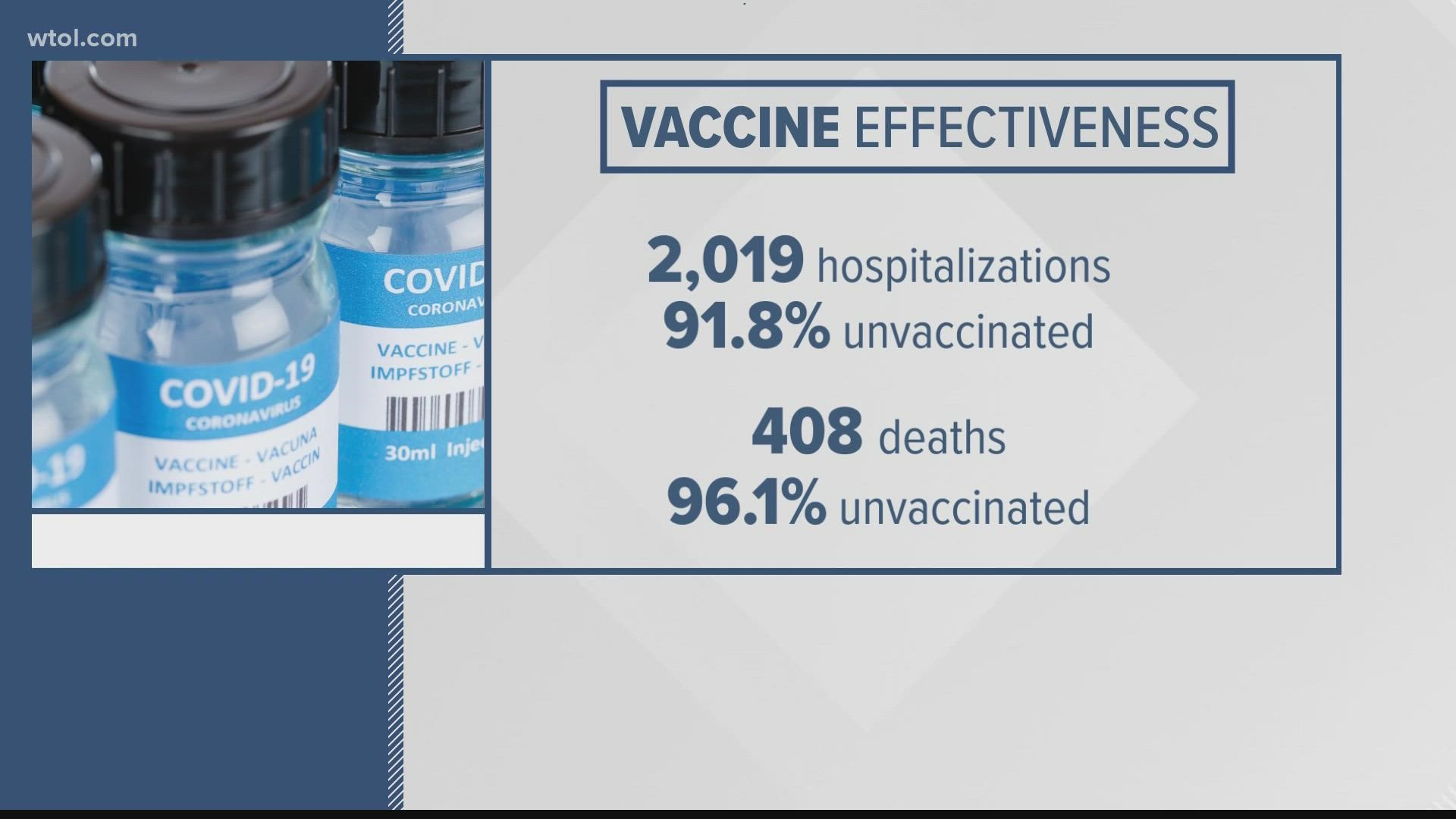TOLEDO, Ohio — Two interesting pieces of data were released by the Ohio Department of Health this week.
The first was an analysis of COVID hospitalization and death data going back to the beginning of April. The study indicated that hospitalizations and deaths were markedly higher in counties that had lower vaccination rates than the state average of 58 percent.
Hospitalizations were 35 to 40 percent higher in these counties and deaths ranged from 74 to 94 percent higher. Ohio's far western counties, including Williams, Defiance, Paulding, Putnam and Allen counties have seen a surge in cases and hospitalizations. All of those counties are below the state's vaccination average.
On Thursday, the state also released its latest breakthrough data. Over the past week, 91.8 percent of hospitalizations were unvaccinated patients. Deaths were even more dramatic, with 96.1 percent of deaths being unvaccinated.
It is the second week in a row that those numbers have increased after taking a drop around a month ago. The uptick coincides with a rapid acceleration of the state's booster program. Initial vaccinations continue to be sluggish, averaging about 10,000 per day, but Ohio has been routinely reporting more than 40,000 booster shots administered daily. There have now been 2,041,723 Ohioans who have received boosters, roughly 18 percent of the population.
State health leaders continue to push boosters, especially among the most vulnerable populations - 65 and over and those with underlying health conditions.
When the vaccination program began last December, Moderna and Pfizer touted efficacy rates of 92 to 95 percent. But there has been growing evidence that the vaccines effectiveness begins to wane after about six months. Ohio only tracks breakthrough hospitalizations and deaths, but Michigan, Indiana, and Pennsylvania track breakthrough cases, and those numbers have increased in recent months. From Oct. 7 to Nov. 5, 27 percent of Michigan's cases were in people who were fully vaccinated.
Pfizer says its studies indicate that a booster will return a person to the protection levels seen after a person initially became fully vaccinated.
The wildcard continues to be the spread of the omicron variant. Early signs are that the mutations in its spike protein make it even more contagious than the delta variant. And studies out of South Africa and Europe indicate that the latest version of the variant has evasion capabilities, meaning that the antibodies generated from the vaccine, and even from previous infection, are not as protective as they were against delta and earlier generations of the virus. In fact, there were few re-infections from the delta variant. That has not been the case in South Africa.
Omicron has yet to be detected in Ohio, though there is no reason to believe it is not already here. The state only does genetic sequencing on select samples of positive tests.
Pfizer announced earlier this week that it believes its booster will be effective against omicron. It will be several more weeks before health officials can determine if omicron is as lethal as delta, or even it will ever become the dominant strain in the Ohio and the United States.
RELATED:

